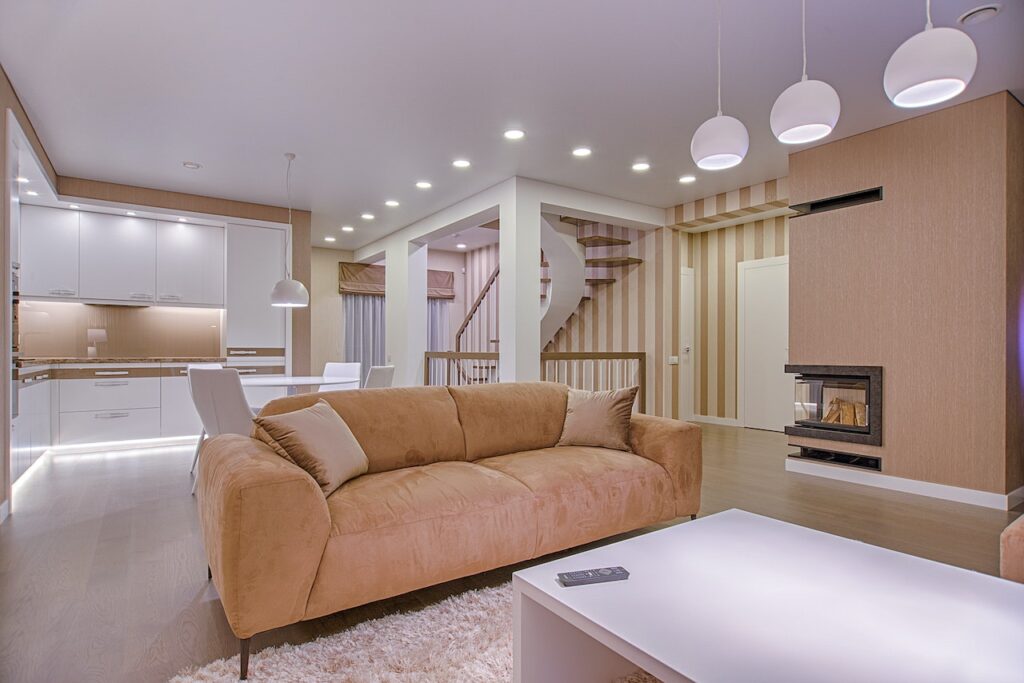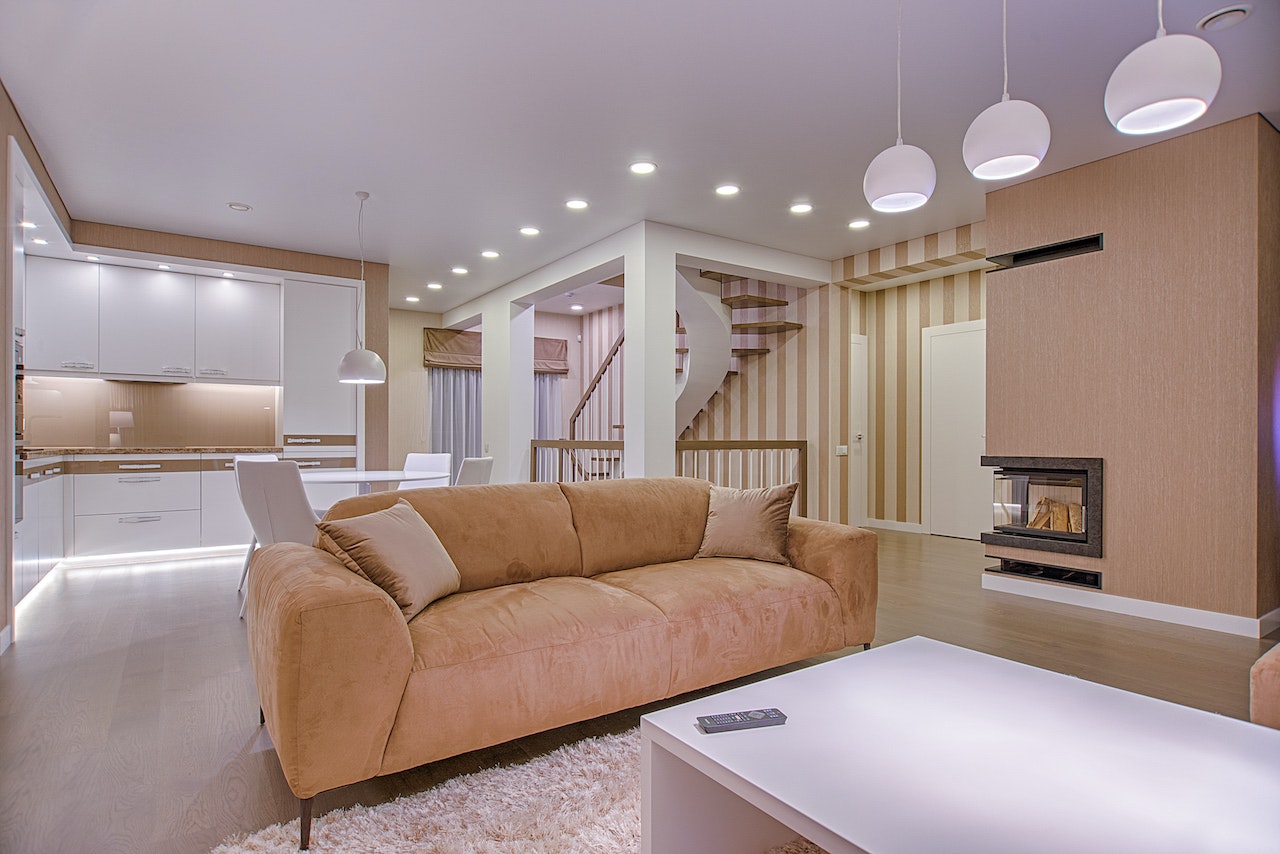Photo by Vecislavas Popa: https://www.pexels.com/photo/beige-couch-1571457/
When you think of rentals, one may gravitate towards an apartment or some form of shared living. However, single-family rentals are also on the rise (at least in Texas). In this blog, we’re going to be talking about SFR (single-family residence) rentals, and we’re going to be sectioning the pros and cons for what these are. Specifically, we want to go over the benefits and setbacks for both investors AND tenants! So this post is going to be jam packed with information. So buckle up, grab your drink of choice, and we’ll try our best to explain the ins and outs of owning and living in a short-term vs. long-term rental property!
To get started, let’s find the definition of a short-term vs. long-term rental. A rental, to be specific, is an amount paid or collected as rent and something that is rented (source: merriam-webster). Straight forward if you ask us. But what we’re getting at, is that the property in which is being listed as a rental means that those living in it do not OWN the property, and will never own it unless it is being purchased. At that point, the home is no longer a rental, but for sale and may be in the process of transferring ownership. Investors find pros and cons to both owning short-term and long-term rentals, but ultimately it depends on the type of income an investor would like to invest their time and money in. Tenants/consumers of these two rentals are a lot more definitive in their purpose between choosing a short-term or long-term rental. We’ll be going over the differences for all of these now. So first, please see the definitions below for the differences in a short-term vs. long-term rental:
- SHORT-TERM RENTAL: A furnished living space available for short periods of time, from a few days to weeks on end (source: pacaso). In Texas, a short-term rental is occupancy for less than 30 days.
- LONG-TERM RENTAL: Often rented out to a long term tenant for a long period of time. This can range from 30 days to 6 months or more (source: zeusliving).
As you can imagine, a rental’s purpose will be determined based on the needs of the investor as well as the occupants. Investors looking into the rental property market will find benefits, as well as setbacks, in owning a rental to make income. To see if owning a rental property is the right move, having a generalized overview will be helpful. We will first look at the pros and cons for investors and why each rental may benefit them based on their goals with owning a property as a rental:
Short-Term (Investors) | Long-Term (Investors) |
PROS
CONS
| PROS
CONS
|
All in all, it could be safe to say that owning and operating rental properties will be beneficial in earning income, regardless if it’s short-term or long-term. Of course, it will depend ultimately on the consumers. Those who are looking to pick either a short-term or long-term property to stay in will find pros and cons to each as well. So next, we’re going to look at what tenants of rental properties should look for when picking a short-term vs. long-term rental:
Short-Term (Tenants) | Long-Term (Tenants) |
PROS
CONS
| PROS
CONS
|
As of the writing of this post, we are seeing a decline in short-term rentals. With the hit of high fees and rates being similar to those of hotels, many are choosing hotels rather than short-term rentals as their place to stay when visiting or vacationing from out of town. However, depending on the short-term rental, many are offering experiences along with their stay. As an investor, it would be an option to still potentially make a profit with short-term rentals when catering to consumers looking for a unique and one-of-a-kind experience living in that rental. For example, the famous Hobbit House in McKinney or Casa Kumwesu in Waco are some short-term rentals that offer more than just a temporary place to stay with high returns based on demand.
Long-term rentals are continuously rising in North Texas. So much so that in the past year, the rise of long-term rental neighborhoods have been popping up nationally. With many restrictions being integrated within HOA neighborhoods limiting both short-term and long-term rental properties, many developments are erecting solely rental homes to cater to the demand of incoming future homeowners. This allows many people looking to buy a home to still save and educate themselves prior to home ownership, while also benefiting from living in a home themselves. Neighborhoods like The Luxe of McKinney and Avilla Parkway in Celina are some of the examples of SFR rentals which include amenities to live in for long-term rentals.
As an investor, it’s best to discuss your options on what would be a smart decision into buying or creating your current home into an investment. Whether it’s a short-term or long-term rental property, the best place to start is to discuss your options and investment goals with your local real estate advisor. Understanding the market, demand, and potential gains and losses on one property is just the tip of the iceberg! Factors are dependent on location, price, restrictions, and others to see if either a short-term or long-term rental is right for you to build wealth through real estate.
As always, the housing market is always changing, so you’ll never know until you ask and do your research. Your local real estate agent will help you through and through when it comes to your real estate goals– whether you’re an investor or tenant. We hope this post gives both investors and tenants an insight into the world of short-term vs. long-term rentals. Until next time, friends!



